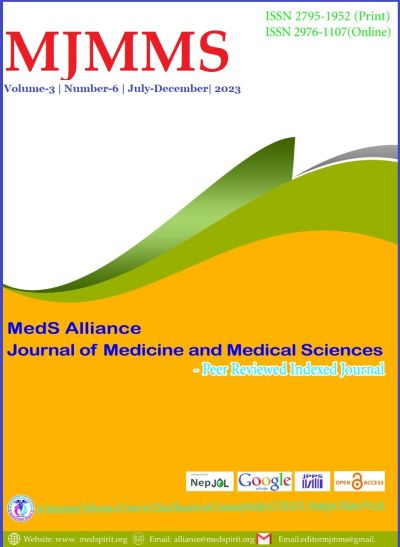Relationship Between the Height of the Person with the Length of the Radius in Undergraduate Students of Gandaki Medical College Pokhara
DOI:
https://doi.org/10.3126/mjmms.v3i6.66558Keywords:
Forensic anthropology, gender-specific equations, radius length, skeletal measurements, stature estimationAbstract
INTRODUCTION: Stature estimation from skeletal remains is a critical component in forensic anthropology and medical examinations. Traditional methods often require a nearly complete skeleton, which may not be available in cases of dismembered or decomposed bodies. This study explores the connotation between the height of individuals and the radius’ length as a potentially practical and accessible method for stature estimation.
MATERIALS AND METHODS: The study involved 125 asymptomatic, healthy undergraduate medical students, aged 18-25 years, from Gandaki Medical College. Height measurements were obtained using a stadiometer, while radius length was measured by marking two specific points on the radius and measuring the distance between them with a spreading caliper. Statistical exploration was carried out with p<0.05 significance rate.
RESULTS: The investigation revealed a strong and statistically significant positive correlation between height and radius length for all participants (p < 0.001). Gender-specific analyses showed a slightly higher correlation for males compared to females. These findings suggest that radius length can be a reliable predictor of stature, with potential gender-specific equations.
CONCLUSION: The study highlights the potential utility of radius length as a practical and accessible method for stature estimation in forensic anthropology and medical assessments. The strong correlation observed between height and radius length, along with gender-specific differences, supports the development of genderspecific regression equations for more accurate predictions of stature. This research contributes to the development of simplified and efficient tools for estimating stature from skeletal measurements, reducing reliance on complete skeletons and complex mathematical models.
Downloads
Downloads
Published
How to Cite
Issue
Section
License
Copyright (c) 2023 The Author(s)

This work is licensed under a Creative Commons Attribution-NonCommercial 4.0 International License.




